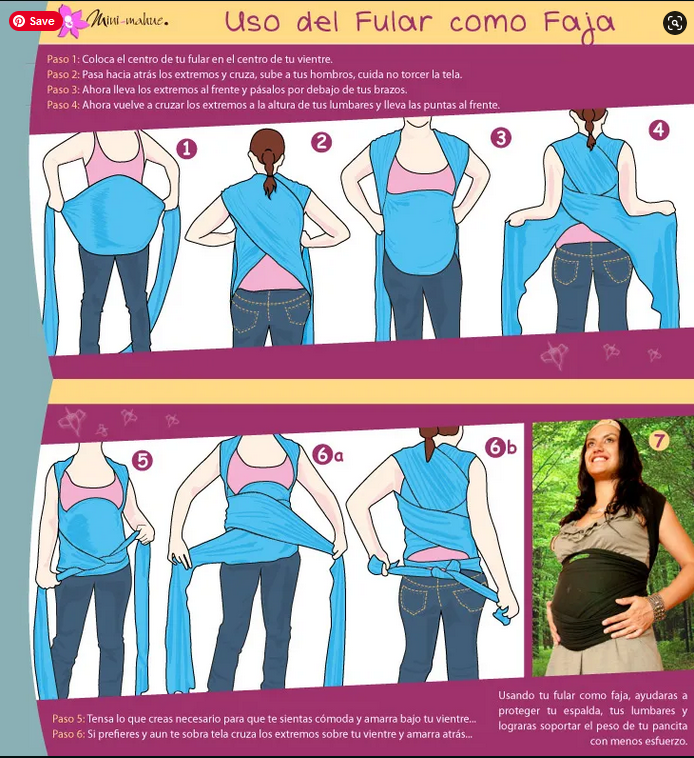Using a Wrap for Labor and Birth
I celebrated my birthday this week, and it seemed appropriate to address birth–as related to wraps, of course–in a blog post. Woven wraps have been used in many ways by many cultures, and in addition to babywearing, a woven wrap can be used to help a pregnant or laboring woman in several ways.

Pulling downward on a rope or strong cloth is an age old labor aid. It assists a pregnant woman in holding a supported squat position in which gravity contributes to the downward thrust of the labor. The upright squat position is ideal for helping a baby to become positioned for the easiest birth, and in this way can accelerate the progress and contribute to the ease of the birth. Pulling on your wrap for labor can be your lifeline and help support you and can also help you feel your strength.
A similar practice is to play tug-o-war with the laboring woman with a wrap, or towel, or a pillowcase with knots tied in the end to help hold on. A birth attendant might pull on one end and the laboring woman pulls on the other during contractions. Or a cloth could be looped around a bedpost so that the laboring woman pulls on both ends, and a second person is not needed to assist her. In the picture below of a pioneer birth, the laboring woman is pulling on the arms of her birth attendants, and even modern midwives will sometimes bring a towel or cloth and encourage the pregnant mom to “play tug-o-war” for the same benefits: for pain relief and to give leverage while pushing.
Hanging a rope or cloth over a tree branch outside was traditional, but we don’t all have a place to do this during birth (or a clear sky, either). If you do not have a safe, strong way to hang your wrap from the ceiling, you might knot the end of the wrap and close it in the closet door with the knot on the inside and the wrap hanging over the top of the door so that you can pull outward and downward from the top of the door (pictured below).
Another way that a wrap can assist a woman in labor is when used to squeeze the hips to open up the pelvis, which can help the baby to become more ideally positioned, and also provides relief from back pain:
A wrap can provide a vital service in lifting the belly in order to assist the baby in descending during labor: Sometimes, as in my friend Nancy’s labor, the pregnant belly sticks way forward of the mommy like a torpedo, and the baby–instead of pushing downward in a direction that will cause labor to proceed and the cervix to open–will push forward and backwards (so that the mother feels the pushing in her back and at her navel) or will have no real directional push going at all because she is almost sitting on the mother’s lap, way out in that extended belly. This can cause labor to stall or to go very long without progress, exhausting the mother of strength that she will need for the birth. What to do? Lift the mother’s belly, so that the baby starts to move into place and exert a downward force towards the cervix. You can stand in front of mommy, holding her belly, or try to reach from behind with your arms around her. Or you can put the wrap under mommy’s belly and pull upward on that. You can even hold the belly in the desired position by tying the wrap ends together around the mother’s neck or shoulders, or some midwives and doulas may tie the wrap in place around the mother’s waist once the baby is in the desired position, to keep the belly, and baby from sinking back downwards in front of the mother. This article explains using a lift to help position baby and accelerate labor. Anything that helps baby into position ought to accelerate labor as it is that position that causes progress.
A wrap (traditionally a rebozo, a Mexican carrying cloth) can also be used to sift or jiggle the pregnant belly, loosening and relaxing muscles in the third trimester and during labor as demonstrated here:
Wraps can also assist the pregnant woman in pregnancy to provide comfort before the birth-day. This illustration shows one way that the wrap can be used to support the pregnant belly similarly to how I descried it above, but in this case, the support is to give the mom-to-be support in her third trimester, to easy the pains and weight of her now large belly, and could be especially advantageous to mothers of twins with twin sized bellies!

Doula Kaytee demonstrates this method of belly wrapping with detailed tips:
Anastasia of Attached Mommies demonstrates belly wrapping:
And Post Partum? A woven wrap is most often used to carry the baby, of course, but it has other uses, too.
Many moms feel that wrapping the belly AFTER baby is born can be very beneficial to helping the post-partum body to most quickly regain full health. Post partum belly wrapping can help with pelvic pain and restoring pelvic stability and core support to speed healing. It can also help diastasis recti. And particularly when wrapped up your torso to right below your bra, belly wrapping can also help prevent bad posture and slouching during breastfeeding which can be a recipe for pain and discomfort.
However, binding the belly does not replace rehabbing your core and important gentle exercises to strengthen core and back muscles. It can help relieve pain and possibly speed up recovery when combined with other good practices.
Many products have become available bind the post partum belly, but a woven wrap or rebozo remains a simple and effective option that prevents the family from having to accumulate another pregnancy/birth expense.
You can use any supportive piece of cloth for this, either under your clothes or over them. Wrap the fabric tightly around your abdomen. It should reach from your hips up to cover your entire belly. It should be wrapped tightly enough that you feel the support, but not so tight that it is painful or that it needs to be adjusted when you sit.
Advantages have been reported when a woman wears the bind for the first 4-6 weeks of her baby’s life.
I know that several women have used belly wrapping after cesareans and been very happy with their healing, but I would not want to presume to give medical advice and would suggest that a post-cesarean mama research for herself and check with a birth professional.
You do not want the belly wrapping to cause any pain.
Prolapse is another situation where you want to check with your medical professional.
Here is an African belly binding technique:
Belly binding is also a Chinese tradition and here is some detailed information on how to do bengkung belly wrapping from a mom who used it to support her when she had diastasis recti and to help with hip pain:
Here is one way you can use a short wrap to bind your belly post partum:
Whether in Africa, Asia or anywhere around the world, the belly-wrapping traditions focus on the health of the woman’s reproductive organs. The idea is to heal the wounds of childbirth, reposition the uterus and restore the tightness of the vagina muscles.
Intrigued? Wrap Club is where wrap-minded moms (and dads) gather to learn all the amazing things that can be done with a woven wrap including – but not limited to – keeping your baby close to your heart. You can join us for free to ask all your questions and be part of a community.




Naomi O'Flaherty March 26, 2013 at 8:18 am
I love this post! I wish i had known about wraps etc when i was pregnant. I will be using these tips with my clients!
Labour pain relief April 3, 2013 at 12:00 pm
labour pain relief doesn’t only have to be with drugs there is a drug free option. There are many tools out there that can help you with Labour pains without all the needles and pills.
juliadesouz December 19, 2014 at 2:18 am
Actually I used First Response Early Result and got my BFP at only 10 days post-ovulation.
http://www.awomanshaven.com/unplanned-pregnancy-and-abortion
Denise October 28, 2016 at 7:26 pm
I’m just learning about using a wrap for the first time, but I’m super intrigued! I’m always a fan of any natural or holistic health techniques. Thanks for the info! 🙂
Martha December 27, 2017 at 10:42 am
Amazing!! In the Mexican culture its recommended also to bind the belly after birth. My mom made me one with linen. but it was painful because I felt like it would cut into my sides. I will definitely look into these methods after my next baby. Thank you for the Post. 🙂
DianaR December 27, 2017 at 2:28 pm
You are very welcome and thanks for the additional information about Mexican traditions!